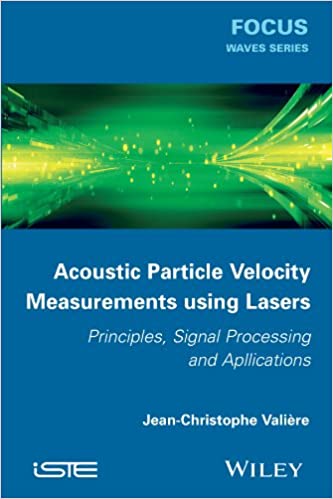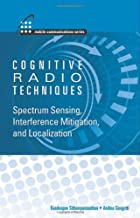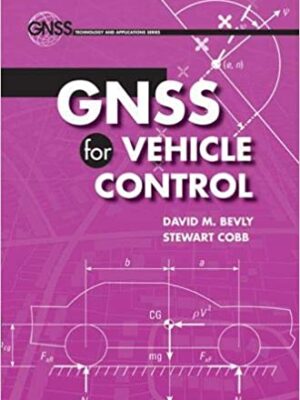Acoustic Particle Velocity Measurements Using Lasers: Principles, Signal Processing & Applications
Original price was: ₹12,738.00.₹10,190.40Current price is: ₹10,190.40.
ISBN: 9781848215627
Author/Editor: Jean-Christophe Valiere
Publisher: John Wiley
Year: 2014
1 in stock (can be backordered)
Description
This book concerns the presentation of particle velocity measurement for acoustics using lasers, including Laser Doppler Velocimetry (LDV or Anemometry (LDA)) and Particle Imagery Velocimetry (PIV).
The objective is first to present the importance of measuring the acoustic velocity, especially when the acoustic equations are nonlinear as well as characterizing the near fields. However, these applications need to use non-invasive sensors. Some optical techniques, initially developed for fluid mechanics, have been adapted to the field of acoustics in recent years. This book summarizes 15 years of research in this area, highlighting the improvements that have been made, particularly in signal processing, and showing applications for which they have proven to be a carrier of innovation.
Additional information
| Weight | 0.424 kg |
|---|
Product Properties
| Year of Publication | 2014 |
|---|---|
| Table of Contents | PREFACE ix CHAPTER 1. SUMMARY OF ACOUSTIC EQUATIONS 1 1.1. Basic equations 1 1.1.1. Fluid- and thermodynamics 1 1.1.2. Hypothesis of linear acoustics without losses 4 1.2. Acoustic equations 5 1.2.1. Linear acoustic equations with sources 5 1.2.2. Some remarks on acoustic sources 6 1.2.3. Without sources 7 1.2.4. Acoustic intensity and source power 9 1.2.5. Acoustic impedance and border conditions 10 1.3. Constants, units and magnitude orders of linear acoustics 12 1.4. Acoustic velocity measurement and applications 16 1.4.1. Velocity estimation from pressure gradient 16 1.4.2. Intensity estimation 17 1.4.3. Application to impedance estimation 18 1.5. Beyond linear equations 18 1.5.1. Acoustic equations with mean flow 19 1.5.2. High acoustic displacement 20 1.5.3. Acoustic streaming 22 1.6. Bibliography 22 CHAPTER 2. SOME TOPICS ON SIGNAL PROCESSING 25 2.1. Measurement signal 25 2.1.1. Random signals 25 2.1.2. Statistical averages 27 2.1.3. Time averages 28 2.1.4. Acoustic signal model 29 2.2. Reminder of Fourier analysis tools 30 2.2.1. Fourier transform 30 2.2.2. Uniform sampling and recovery of signals 31 2.2.3. Fourier transform of discrete signals 32 2.2.4. Discrete Fourier transform 33 2.3. Correlations and spectra 34 2.3.1. Definitions 34 2.3.2. Stationary and ergodic process 35 2.3.3. Properties of correlation functions and examples 36 2.3.4. PSD and cross-spectral density properties 38 2.4. Basis of estimation theory 39 2.4.1. Definition and properties of an estimation method 39 2.4.2. Mean estimator 40 2.4.3. Correlation estimators 41 2.4.4. Spectrum estimators 42 2.4.5. Spectrum estimator by synchronous detection approach 45 2.5. Non-uniform sampling 47 2.5.1. Poisson processes 47 2.5.2. Empirical estimators 48 2.5.3. Comparison of spectrum estimation of random sampling sequences 56 2.6. Bibliography 57 2.7. Appendix 58 2.7.1. Properties of the Fourier transform 58 2.7.2. Fourier transforms of typical functions 59 2.7.3. Properties of the discrete Fourier transform (DFT) 60 CHAPTER 3. LDV FOR ACOUSTICS 61 3.1. Bases of LDV 61 3.1.1. Optical principles 61 3.1.2. Signal processing of burst analyses in the context of fluid mechanics 64 3.2. Models for acoustics 67 3.2.1. Model of the Doppler signal 68 3.2.2. Model of the sampling in the context of acoustics 70 3.2.3. Case of low acoustic displacement with few mean flows 73 3.2.4. Case of high acoustic displacement with few mean flows 76 3.2.5. Other cases 79 3.3. Estimation method for low acoustic displacement 80 3.3.1. Theoretical limitations 80 3.3.2. Estimation methods based on IF detection 84 3.3.3. Estimation based on parametrical models 87 3.3.4. Simultaneous detection of flow velocity and small acoustic velocity 91 3.3.5. Comparison between methods for low-level acoustics 95 3.4. Estimation method for high displacement 99 3.4.1. Experimental condition 99 3.4.2. Theoretical limitations 101 3.4.3. Estimation for SPP 102 3.4.4. Estimation for highly NSPP 103 3.5. Bibliography 107 CHAPTER 4. PIV FOR ACOUSTICS 111 4.1. Principle of PIV 111 4.1.1. Setting up 112 4.1.2. Model of the 2D signal and image processing 114 4.1.3. Postprocessing adapted for acoustic measurement 121 4.2. Validity domain concerning PIV for acoustic 125 4.2.1. Lower bound inspired by fluid measurement approach 125 4.2.2. Lower bound in case of linear acoustics 126 4.3. Examples and comparisons 131 4.3.1. Acoustic measurement 131 4.3.2. Acoustic streaming measurement 133 4.4. Bibliography 134 CONCLUSION 137 INDEX 141 |
| Author | Jean-Christophe Valiere |
| ISBN/ISSN | 9781848215627 |
| Binding | Hardback |
| Edition | 1 |
| Publisher | John Wiley |
You must be logged in to post a review.






Reviews
There are no reviews yet.